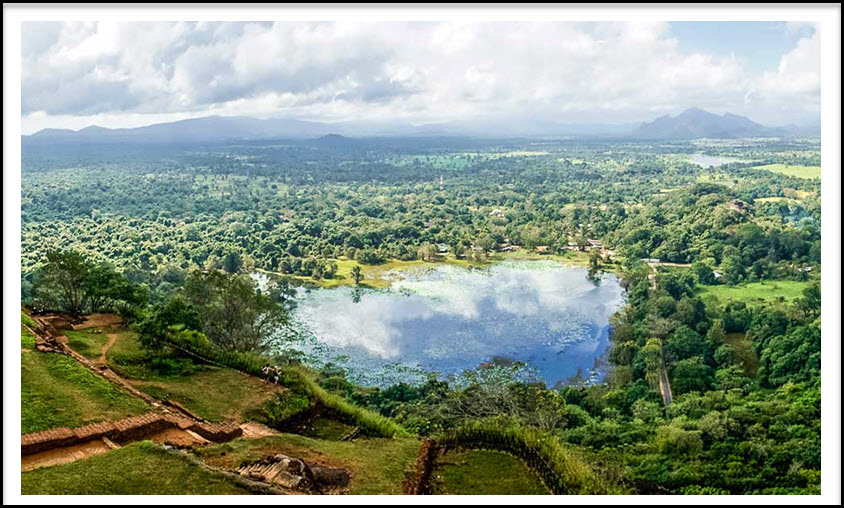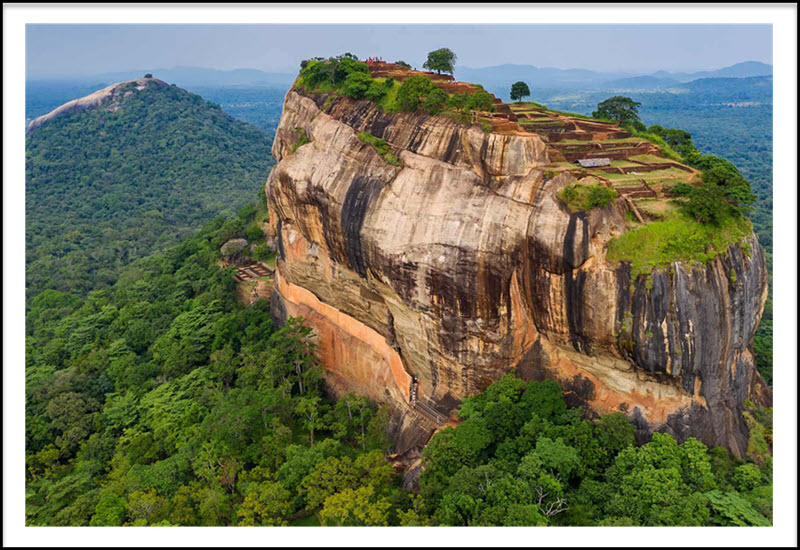Sri Lanka is composed of different ethnic groups: Sinhalese compromised the majority while Tamil compromised the minority groups. Other ethnic groups includes Moor, Malay, Burgher and Christians. In today’s post, let us talk about Sri Lanka Naming convention and some interesting facts about Sri Lankan names. Read on below for more details.

Sri Lanka Naming Conventions
It has been recorded in the historical documents that the Sinhalese people first comes from West Bengal (now known part of Bangladesh), while the moors are Muslims (Descendants of Arab), the Malays or the Muslims of Malay and lastly the Christians (combinations of Sinhalese and Tamil converts).
Sinhalese
In the Sinhalese community it is composed of two names: “GE” and the actual name of the person. The Suffix “GE” simply means “The house of” or the ‘Tribe of”.
The First is the “GE” name pronounced as “gay”. It can either be a place from where the origin of the family of that person is, or the title of the head of its family or it can either be a characteristic of that family during that period in time. An example is the name MuhandiramlaGE Simon. Muhandiram means appointed commissioner or perhaps a leader. So with the name MuhandiramlaGE, in the Sinhalese community this means that the person with that name comes from the house of Muhadiram and his or her actual name is Simon. The prefix “GE” added to the end of the actual name has been passed down from generation to generation. The use of the first name also helps in identifying connections between families.
When women in Sinhalese gets married, the second name (actual name) of the spouse is usually used but the prefix “GE” name of the woman’s name will be retained. In Sinhalese community, the initials of the first names is usually used instead of spelling it out in full.
Tamil
In Tamil community, their methods of choosing the names is different and completely unique although it is still similar to Sinhalese wherein they also use two names:
- First name: represents the name of the Father
- Second name: Representing the actual name of the Person.
Let us take an example the name “Ponnambalam Ramanathan”. With the given example, it simply indicate that the name Ponnambalam is the name of the Father while the name Ramanatham is the actual name of the person. Hence, it is usually written as P. Ramanathan where the first name is usually written in initial form rather than spell the entire name similar to how Sinhalese people writes the names.
Since the naming structure with Tamils is similar to that of Sinhalese, sometimes it will be difficult to identify which ethnic group that person belongs unless otherwise the convention of how it was adopted will be recognized.
Moors (Muslims of Arab origin)
Moors on the other hand uses numerous techniques and methods of nomenclature. The remote areas ad villages in the community most of the time use the name of the Father as their prefix t their names (same as with Tamils). Although the difference is that in Moors community, they usually use more than one prefix (name of the Father).
To cite an example: the name Muhammad Ismail. The son of Muhamman Ismail will then be named as Muhammad Ismail Muhammad Saleem. The name Muhammad Saleem is the names of the son. It is also known that many Muslims usually use more than one name for their children.
Islam is not really in favor of married women to give up their current family name but the modern method that was highly influenced by the colonial era are now using the names of their husbands after marriage.
Burghers (Anglo-Sri Lankan)
The direct descendants from the Colonial Europeans era and also descendants of Sinhalese and Tamils are the Burghers. The western system is usually adopted in the Burghers community wherein the surname of the individual is passed on from generation to generation. Women after marriage usually use the surname of their husband.
Christians
As mentioned, Christians are a combination of converts from the Sinhalese (Buddhists) and Tamil (Hindus) community. Their method of naming is by adopting the modern western method wherein the surnames are kept intact. But, some Christians that were Sinhalese before may and still adopts the prefix of Sinhalese which is “GE”. Some former Tamils on the other hand still adopts their own naming system of keeping intact as prefix the names of their fathers.

Interesting Facts About Sri Lankan Names
After knowing the different nomenclature methods in Sri Lanka, let us now talk about some interesting facts and details about the names used in Sri Lanka. Naming people will not only help in identifying each other, names also have meaning.
Names were simple during the early times
The names that Sri Lankans have during the early times were pretty simple. Most of the time, especially with Sinhalese names it will only take you to look at those names in the head of the family (Fathers). The name Vijaya means victory while the names Anuradha and Upatissa are the ministers.
During the 3rd century BC up to 3rd century AD, the use of simple names continues in Sinhala Prakrit. While in the 10th century, simple names are still used as seen in Sigri Graffiti but also during this time double-barreled names are now introduced. In the later part of the century, very long names were then used and added to the lists of names.
Sri Lankan Family name takes time to catch on
The suffix “GE” name as mentioned means “house of”. The purpose of the suffix is similar to that of German names with a suffix as “Von”.
At present, Sinhalese people still uses the suffix ge in relation to as the “tribe of” such as Liyanage or the House of the Scribe, Bambaravanage or the house of the forest of the bees, and the Hevage or the house of the soldier
Married Women usually identify oneself as the “wife of”
During the early Brahmi (2nd century BC), women identifies themselves pertaining to as the “daughter of”. But in the later part of the medieval times as seen in the Sigiri Graffiti, women then refers to oneself as the “Wife of” so and so. To cite an example, the female composer tends to identify oneself as Sevu, the wife of Nidalu Mihid. Hence its complete name is Nidalu Mihid Abu Sevu).
Though identify oneself as such does not necessarily represent a patriarchy since there are other men that would also identify oneself as the “husband of”.
Not until after the Kandyan times that women in Sinhalese community user their husband’s surname after marriage, but would keep their family names instead. But after the British ruling, Sinhalese women eventually adopts the use of their husband’s surname after marriage.
Names were differed by Caste
Sri Lankan names (“GE” name and personal names) were differed by Caste.
The members that were carried in the Govi Caste have names such as in Banda forms: Tikiri Banda, Dingiri Banda and Heen Banda.
The members that were borne in the Rodi Caste carries names in a different way. For example, with Hugh Neville (British Civil Servant) has mentioned names such as Wisiya, Asura and Suruwana are borne by the Rodi men while with Rodi Women on the other hand mentions names such as Singowali, Asurangi and Bingumali.
In relation to “Ge” names in Sri Lanka, the Govigama (farmers) have names that was based on where they are located such as:
- Bovattegedara (House of the Garden of Bo Trees)
- Siyambalagoage (House of the Grove of Tamarind Trees)
The Karava GE (Military and seafarers) have names that was based on their traditions of military and seafaring such as:
- Marakkalage (House of Skipper)
- Galappatige (Houe of the Caulker)
- Hennidige (House of the One prepared for war)
- Gardiya Punchi Hevage (House of the Little Soldier of the Guard)
- Patabendige (House of those bounded by the Band)
The Radawa have names related to washing such as Haluge and Apullanagedara where Halu means Shawl while Apullana means to wash the clothes by way of beating the clothes on the rock. This is how they wash they clothes back in the old days.
The Navandanna on the other hand have names that refers to the tradition of their Artisan such as Acharige, Abharana Gedara, Badalge and Bathgama.
Surnames and Titles of Portuguese are common
Back in 1505 when the Portuguese arrived, it has the greatest impact on the society in Sri Lanka including the Portuguese names adopted especially in Sinhalese.
The title “Dom” was applied to churchmen and noble men, while the title “Dona” refers to ladies and women on the highest standing in the society and or community. Since then, the Sinhalese are still adopting the names and titles that was introduced by the Portuguese such as Don Louis.
Aside from the first name of ‘Don”, a huge number of surnames was also left behind by the Portuguese. But this does not necessarily mean that Sri Lankans with Portuguese surnames also carries Portuguese ancestry but it was adopted by those who converted (Sinhalese and Tamil) to Christians.
Example Sinhalese surnames that adopted Portuguese surnames are as follows: Rodrigo, Pinto, Fernando, Fonseka, Costa, Dias, Silva, Almeda and so much more. Although there are also other surnames with a little modifications such as: Livera from Oliveria, Grero from Guerrero, Gomas from Gomes, Mendis from Mendes, Sigera from Siqueira, Thabrew from D Abereu and a lot more.
Personal Names were from Dutch origin
The influence of Dutch on Sri Lankan was not as intense as compared to Portuguese influence. The surnames on Sinhalese and Tamil community was not really used as they were more focus at that time into influencing the local population relating to trading. But even so, surnames was still left behind in Sri Lanka.
Surnames that was borne as Dutch origin includes Tepanis, Karolis, Harmanis, Yohanis, and Girigoris. However, not all names originated from the Dutch some examples would be from their English names such as : Paulis (English Paul); Chaarlis (English Charles), and Jaamis (English James).
Muslims also have GE name
It was previously mentioned that the Muslims in the country such as the Moors also adopted the “Ge” name from Sinhalese. An example are from the Kandayan places where the names adopted “ge” such as Lindegedara, Kandegedara, Galgedara and Nagahadeniya-gedara with the “ge” names that usually placed before the personal name.
Why do Muslims also adopted the “GE” name? The Ge names were adopted by the Muslims because of two reasons: borne from Sinhalese Ancestor (passed down to their Moors offsprings) and Moors readiness to adopt Sinhalese name system so that Moors will identify oneself as having close relations with Sinhalese.

Conclusion
In Sri Lanka, there are different varieties of naming convention and naming methods with the different ethnic groups previously mentioned here.
The names that each of us give to ourselves most of the time reflects how we are as a person and as an individual in our Community. Names makes us feel that we belong in a group and the names we give ourselves helps others to identify us. And names also reflects our attitude and most especially our beliefs.
We hope that this guide has helped you understand and learn Sri Lankan naming conventions even way back ancient name.

